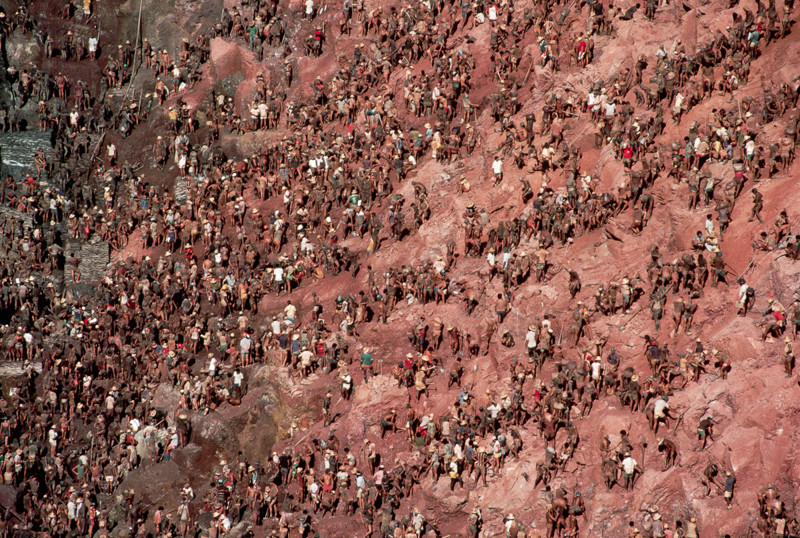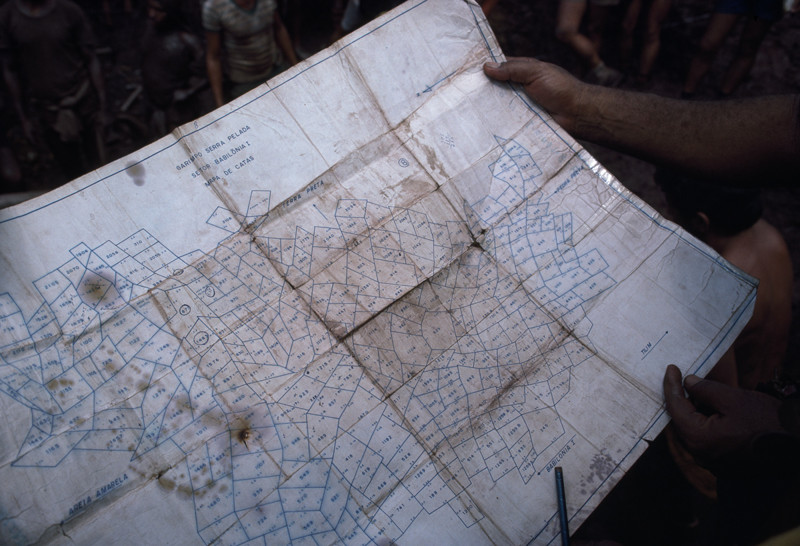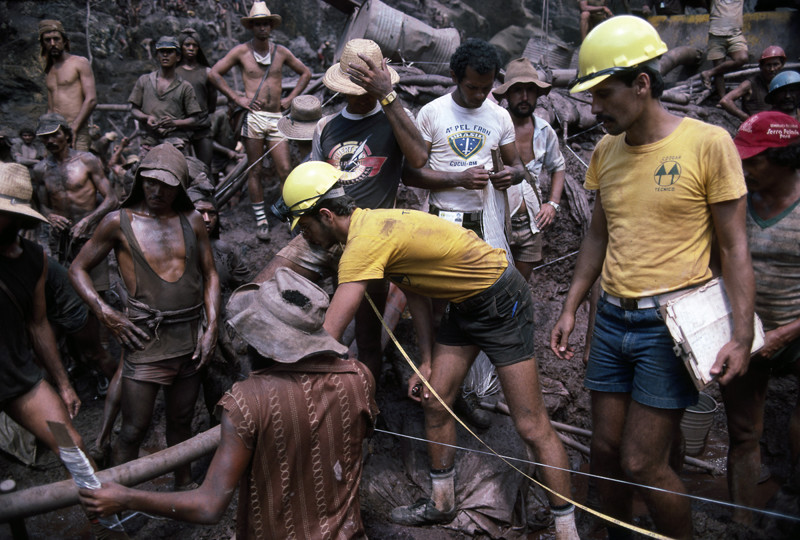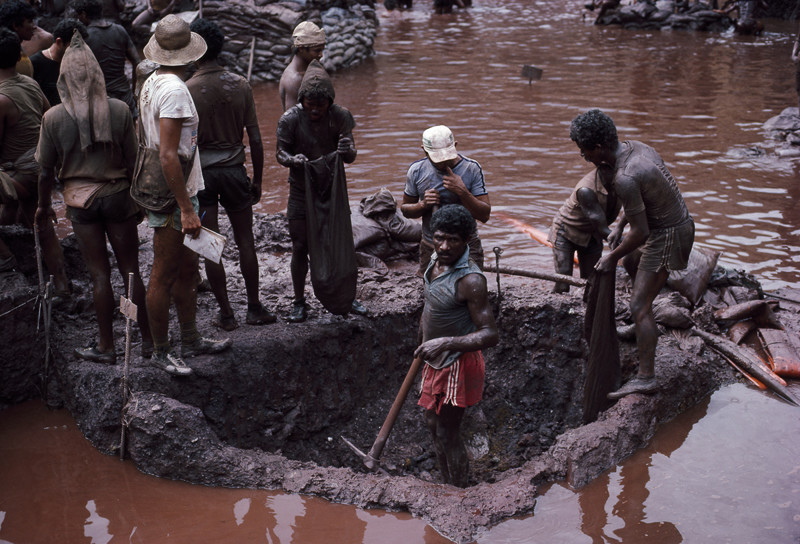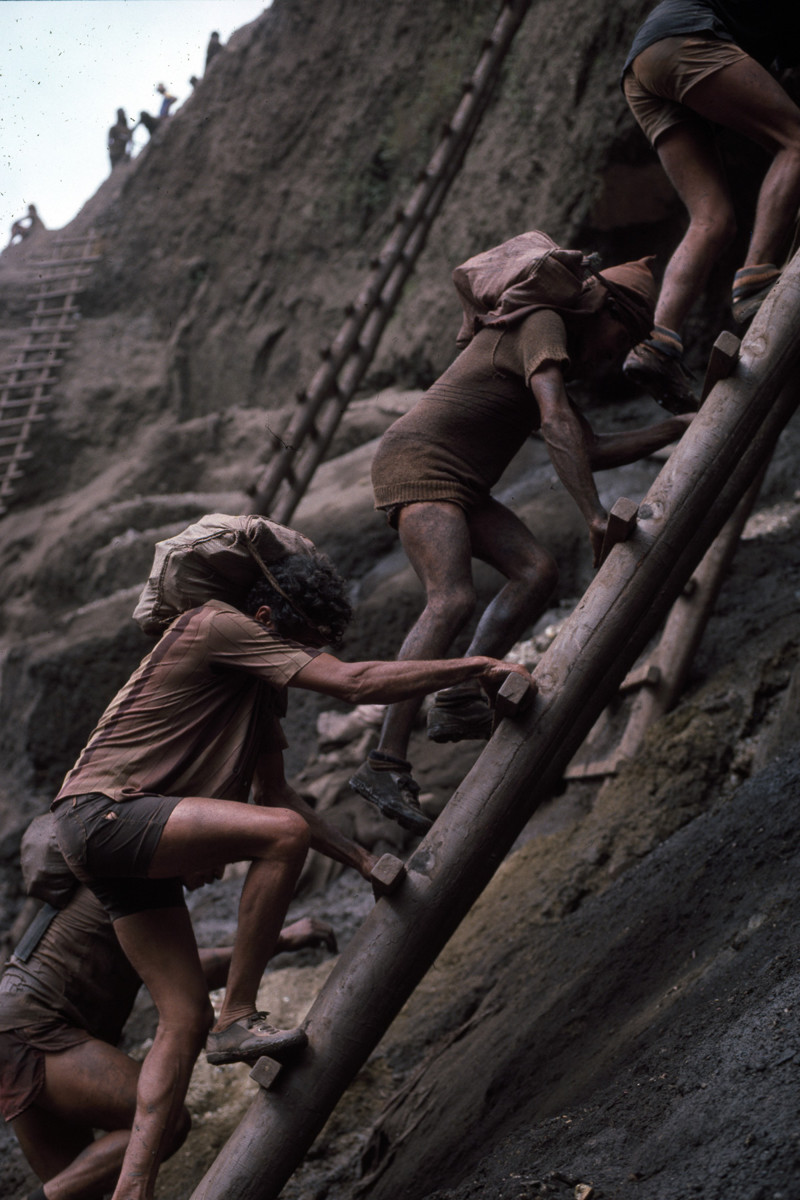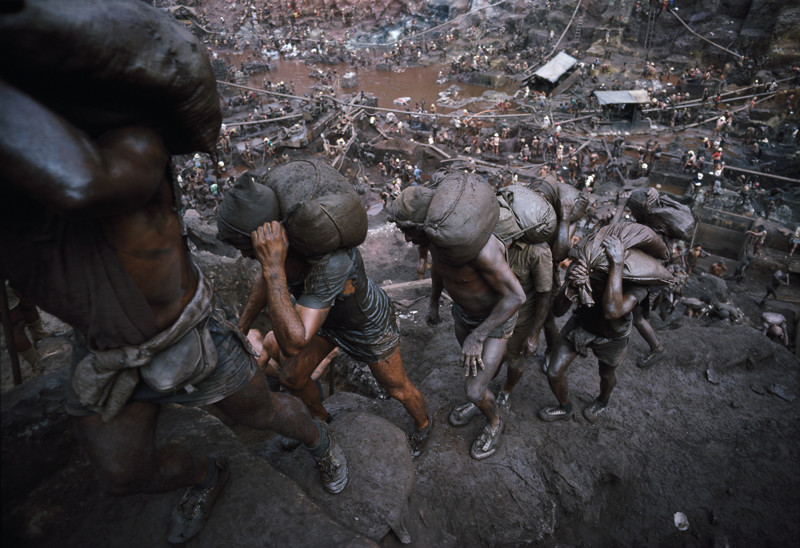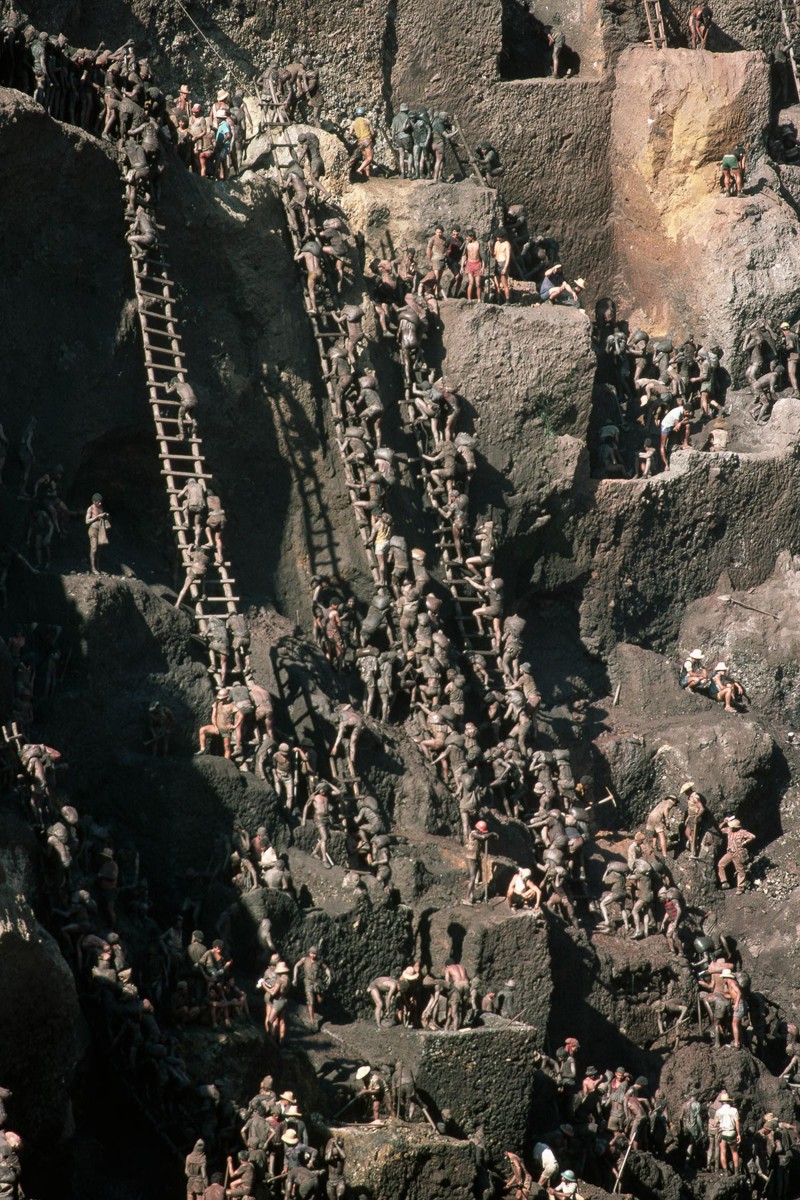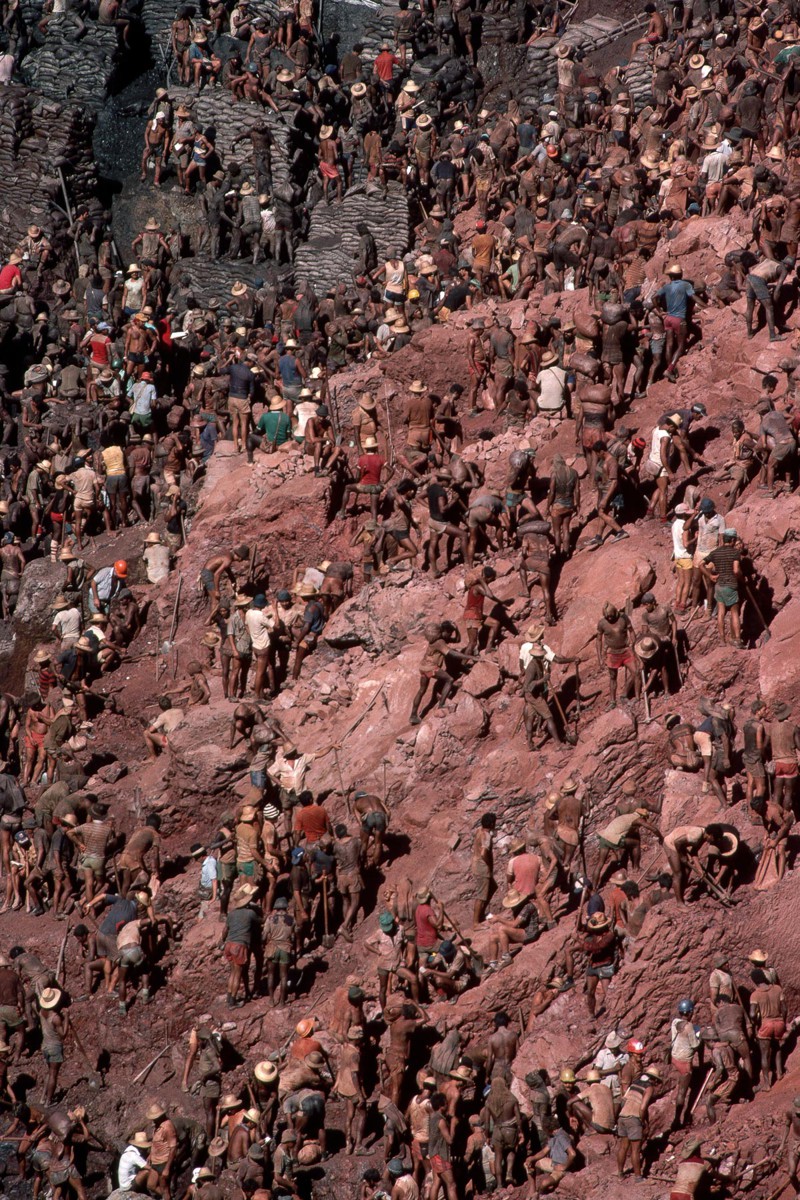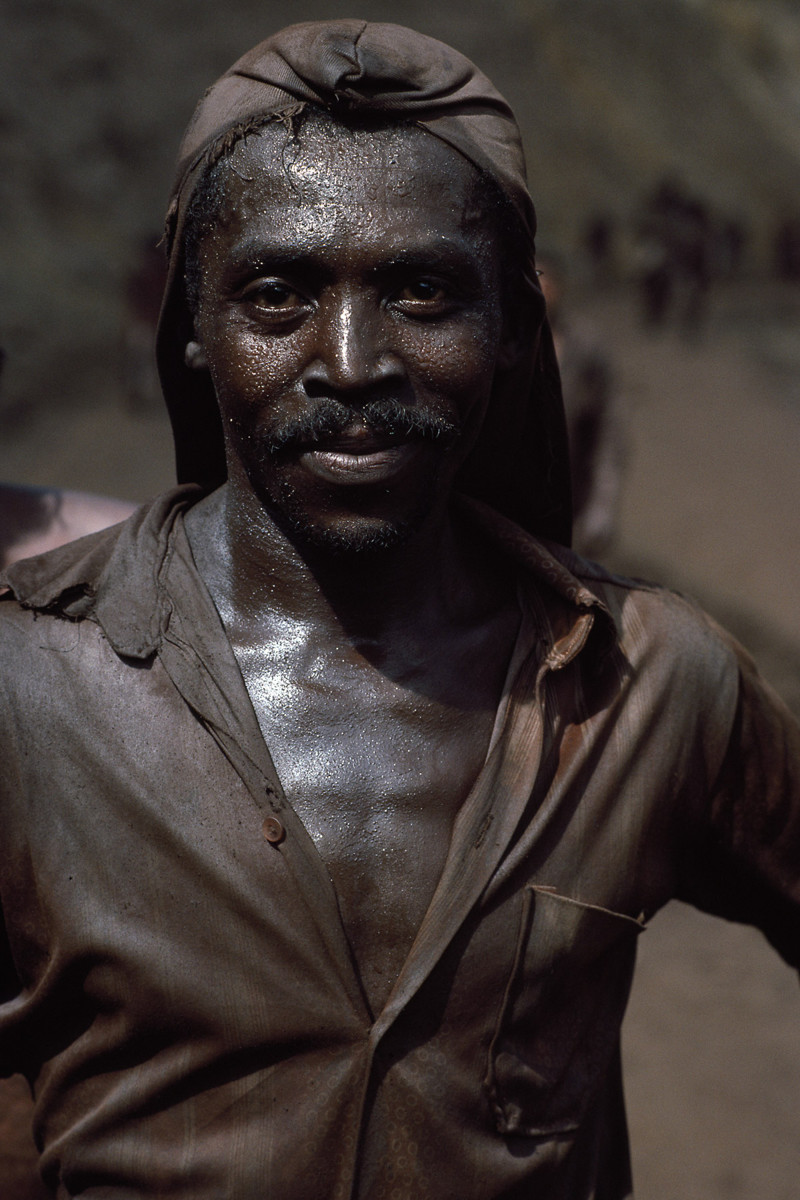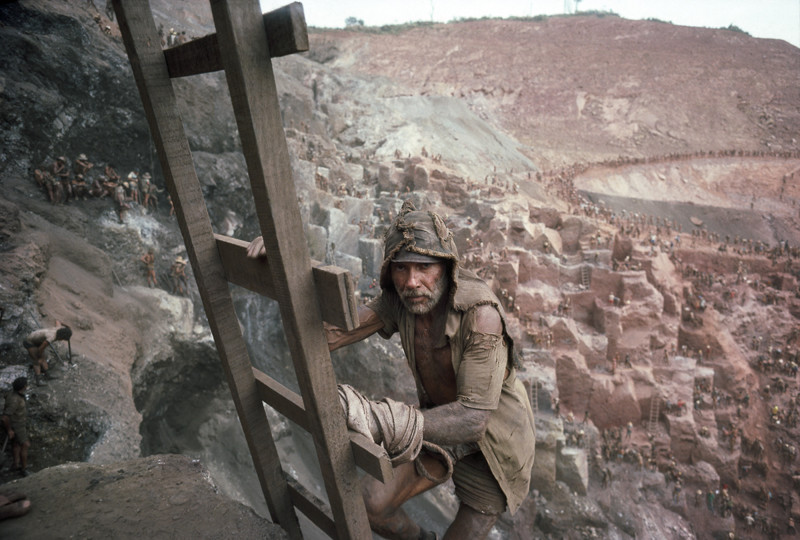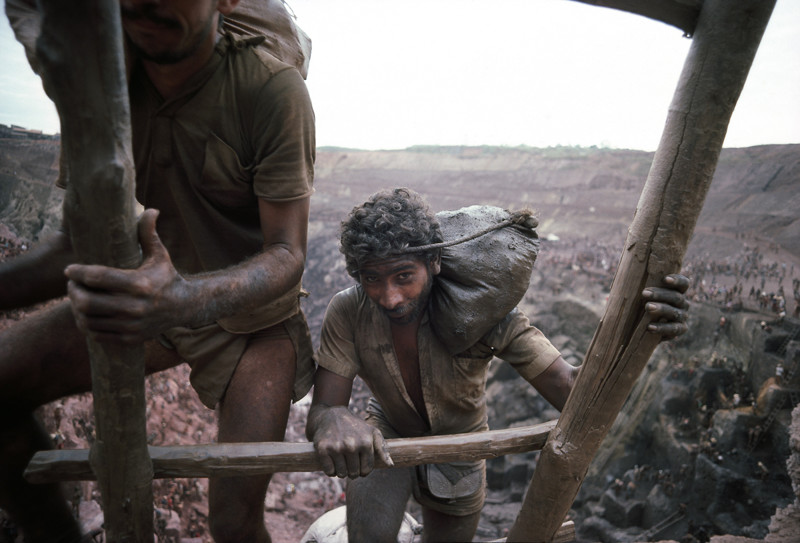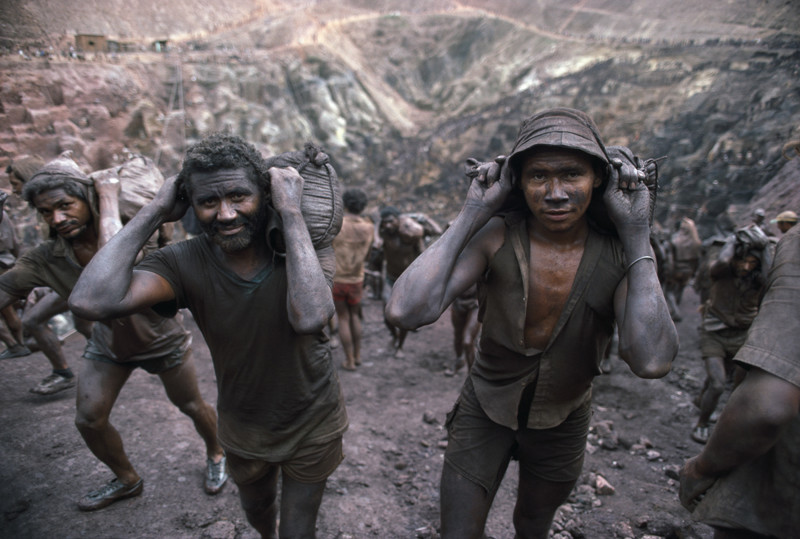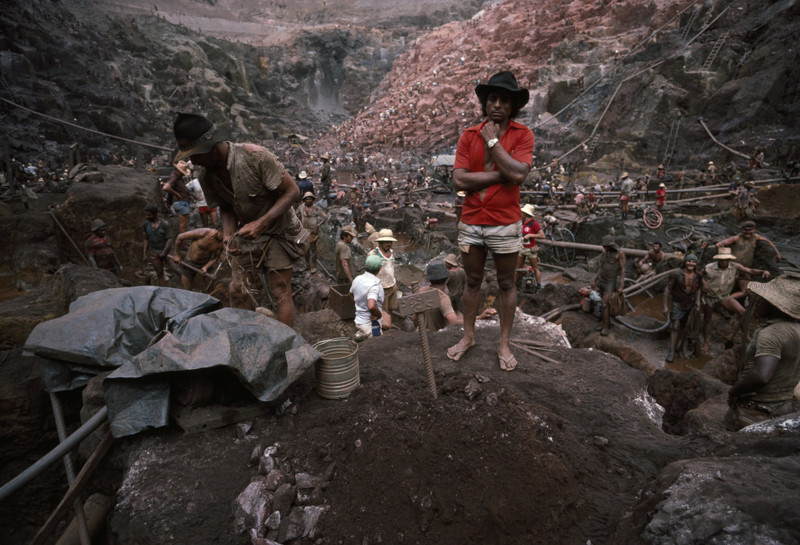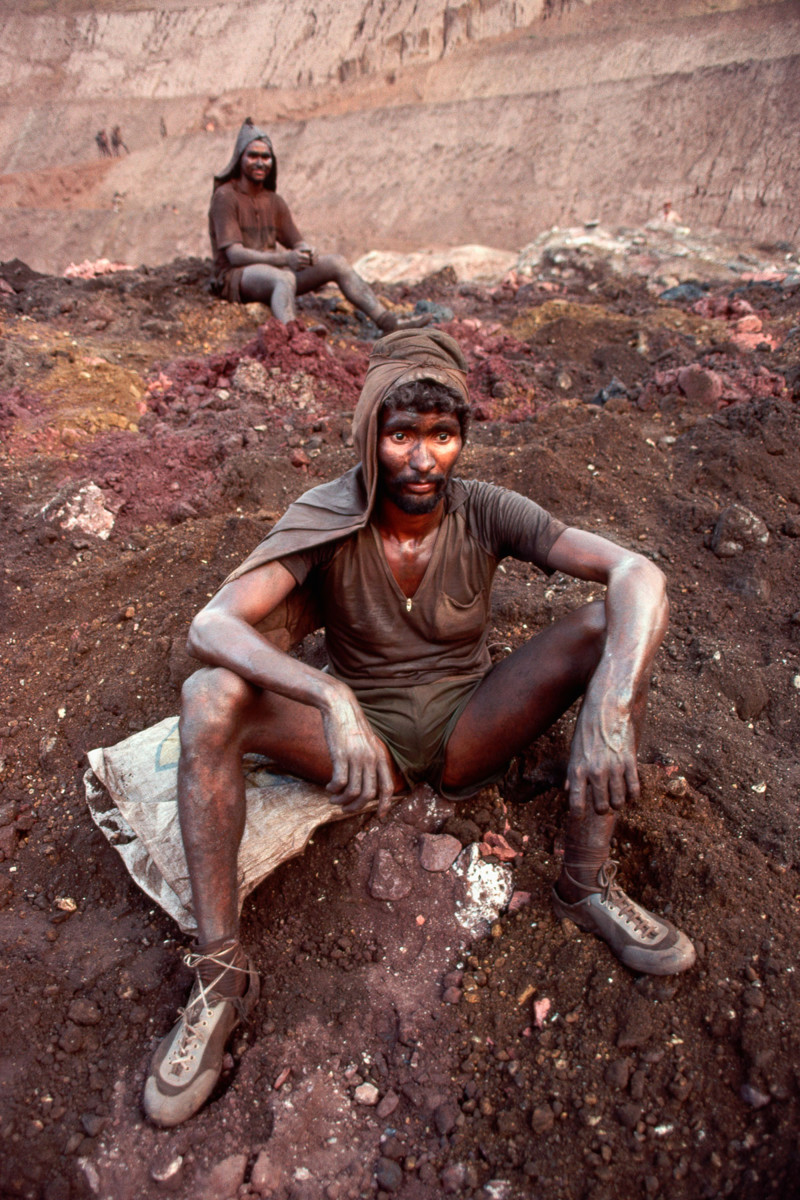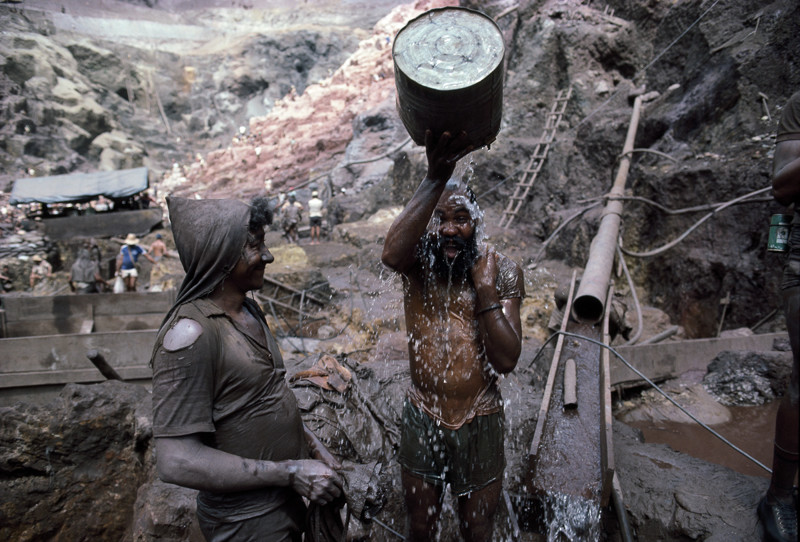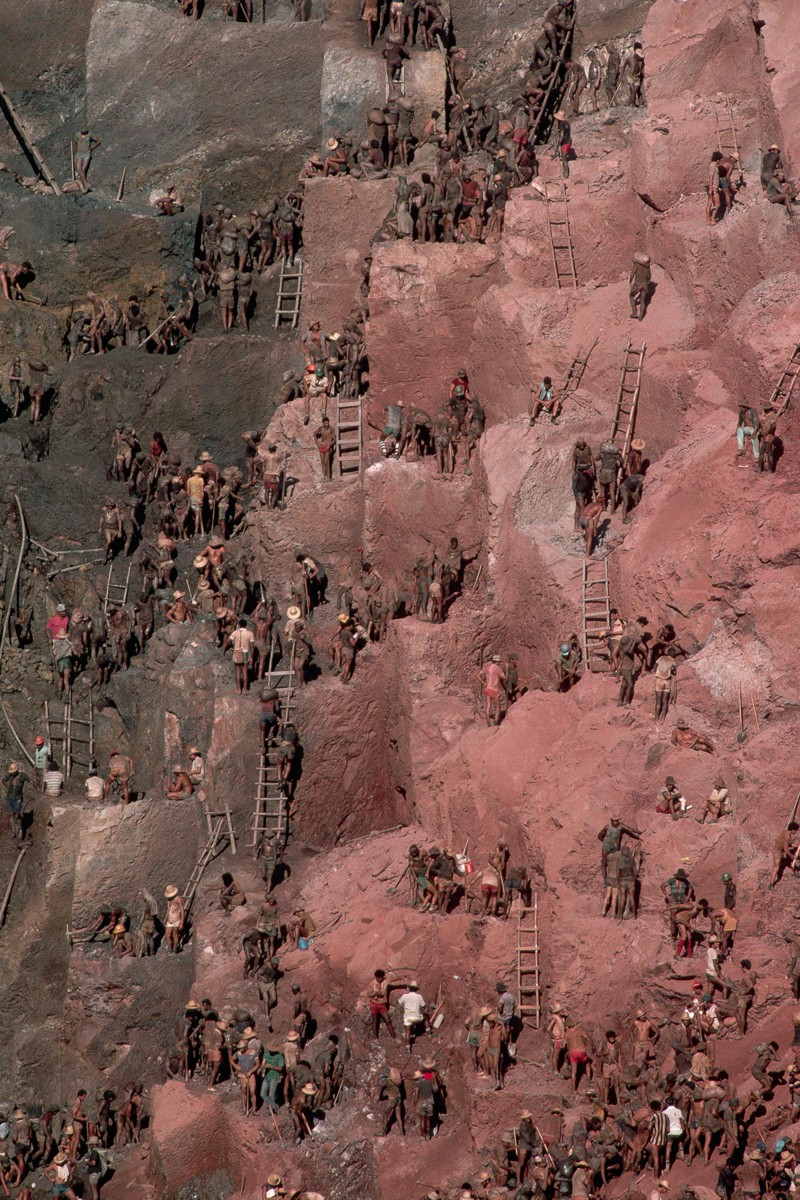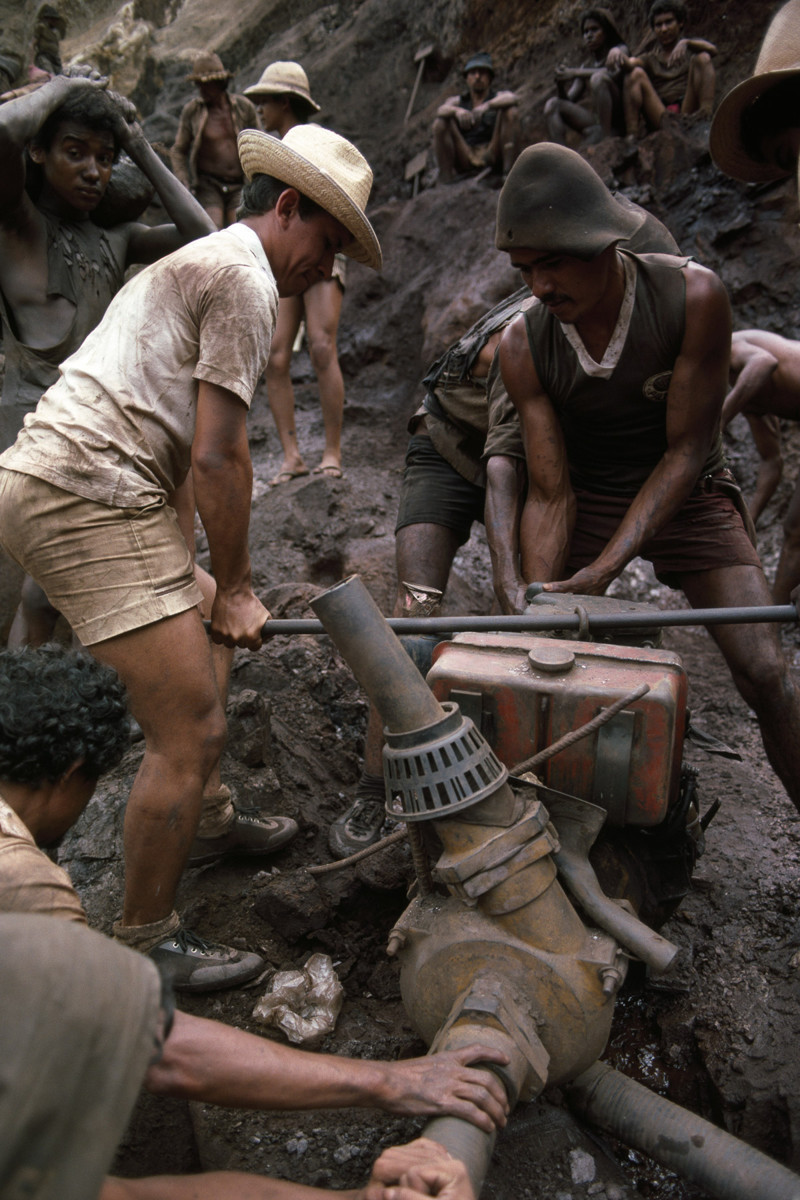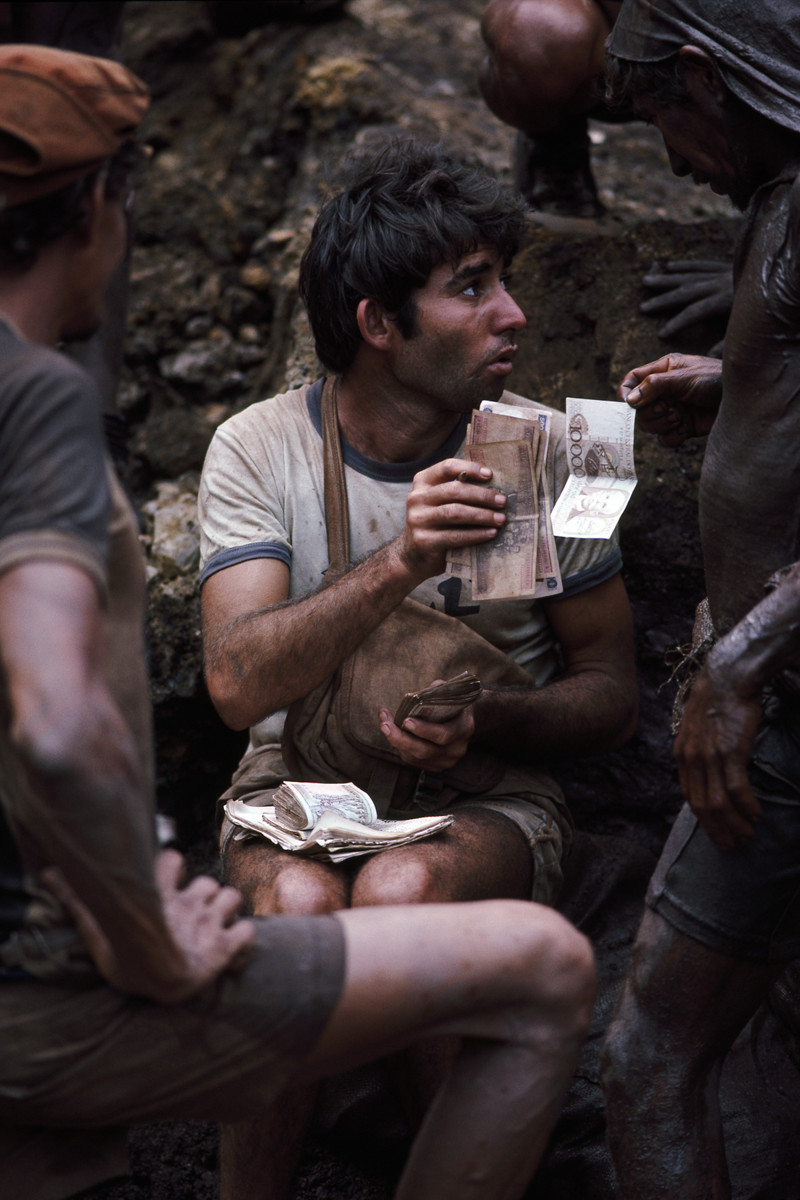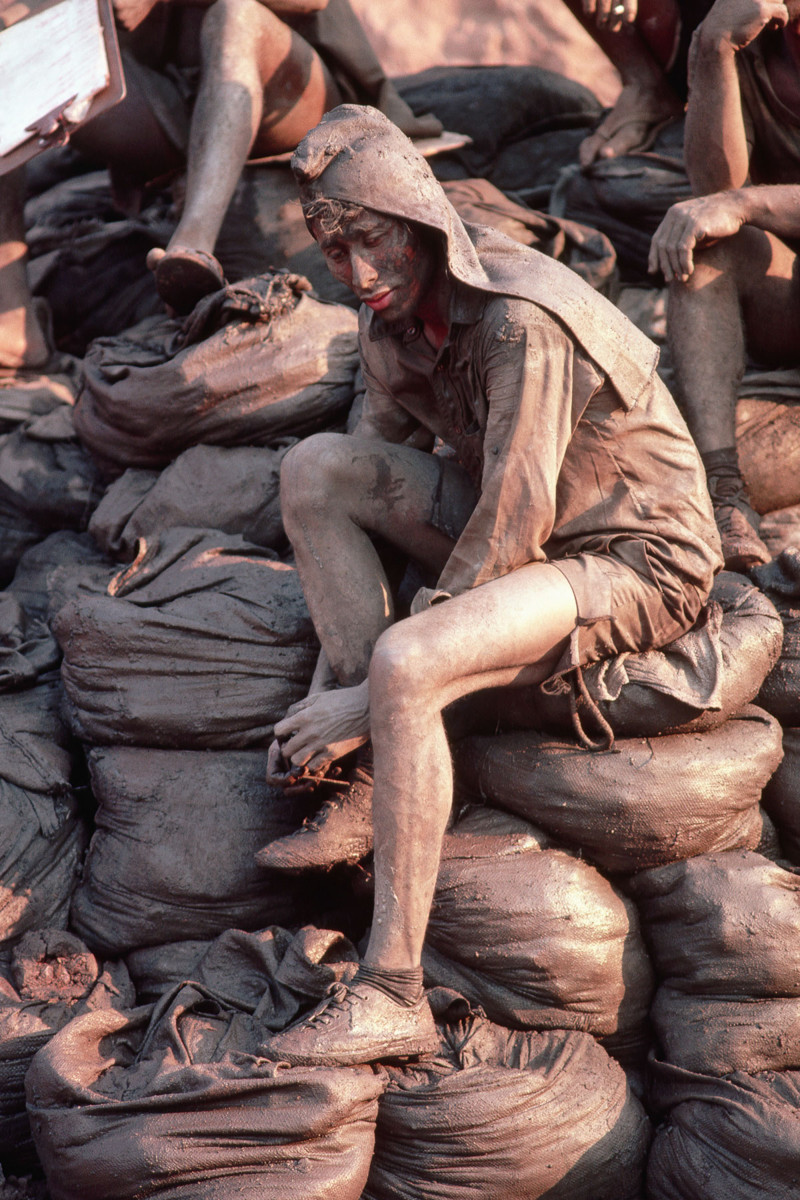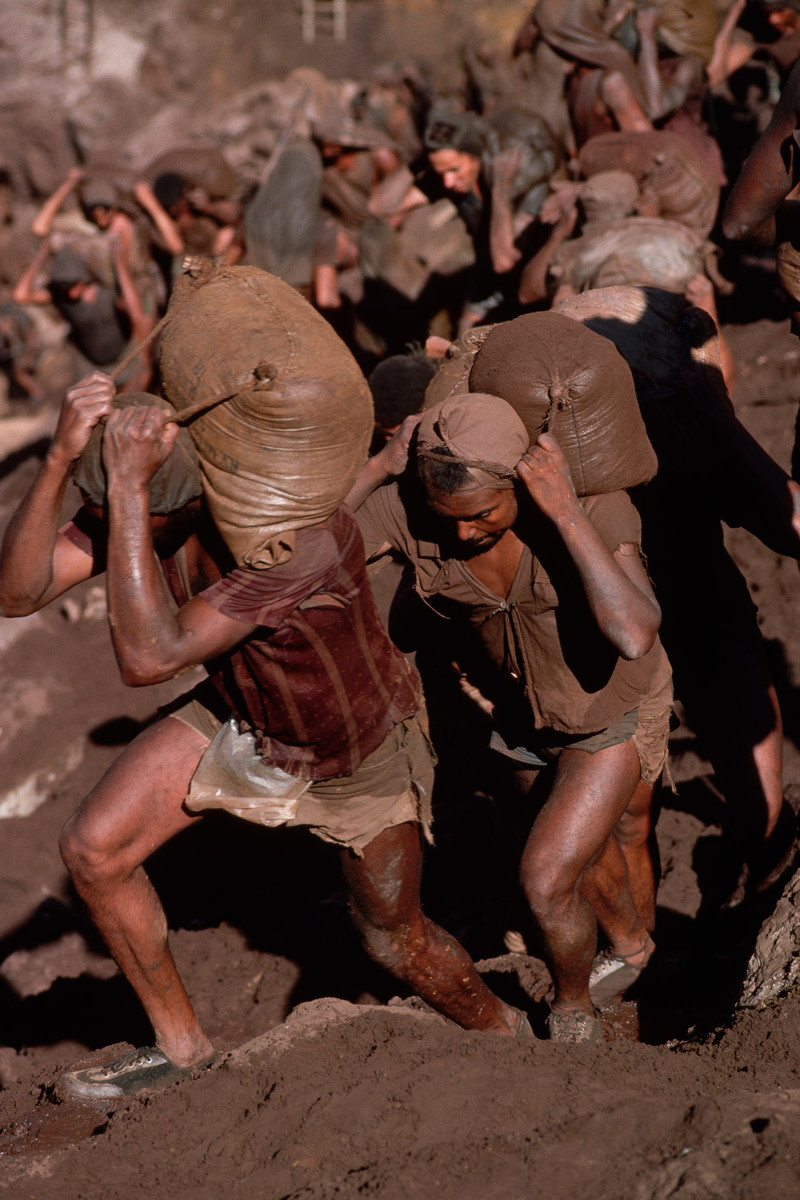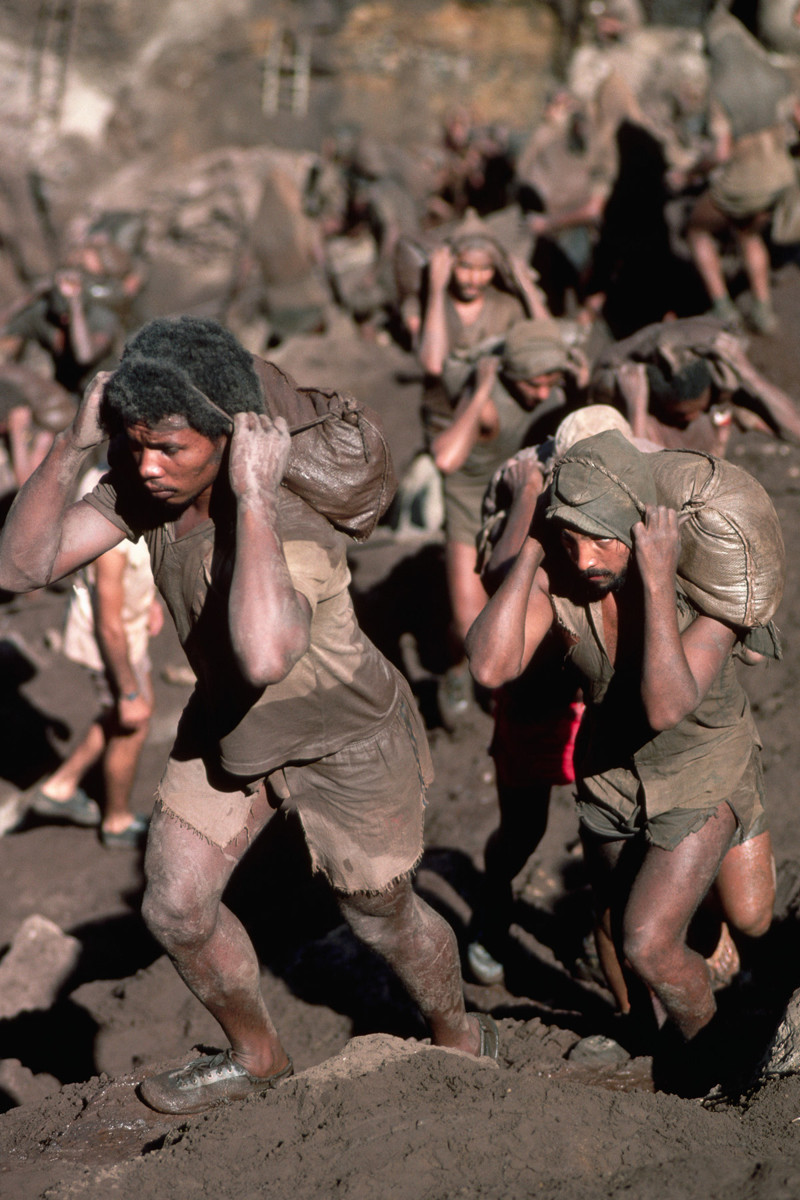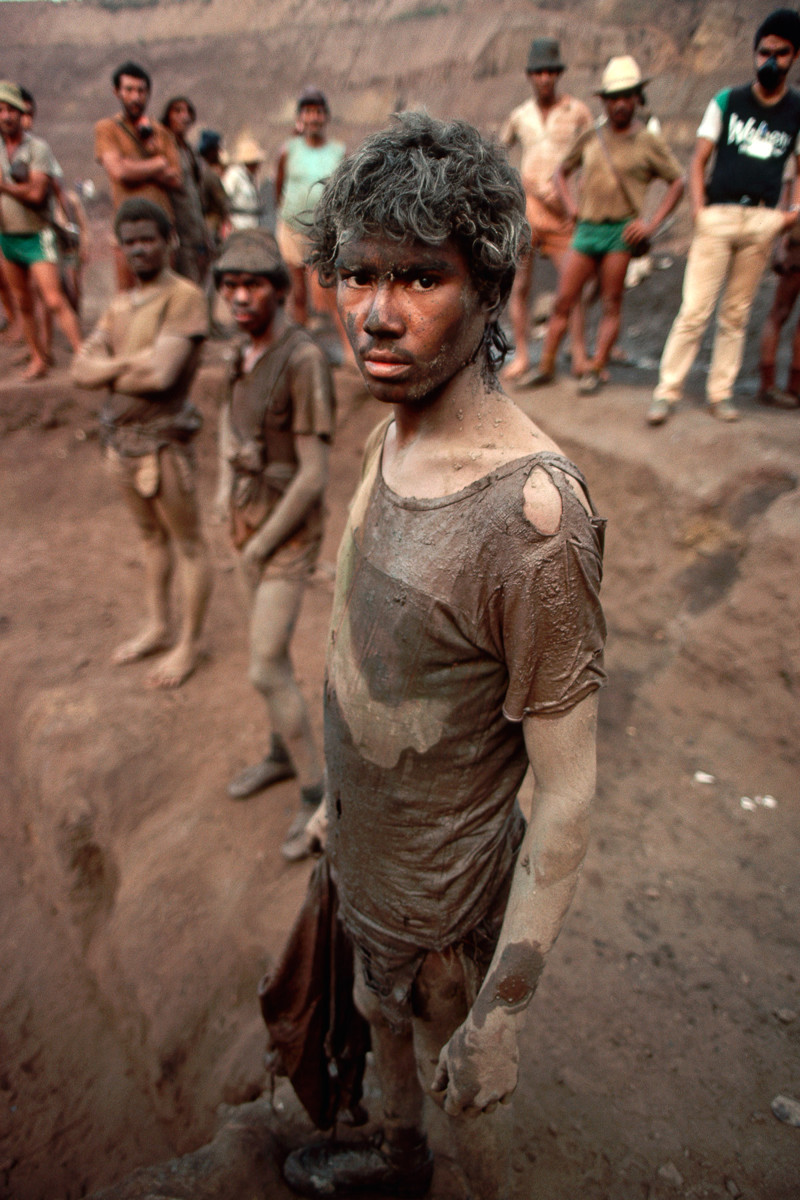45
23
In 1979, Genésio Ferreira da Silva, a farmer in the remote interior of Brazil, discovered a nugget of gold on his property and hired a geologist to see whether there was more to find. Within days, word had spread and a gold rush had begun. After five weeks, 10,000 speculators were scratching through the soil and finding nuggets as large as 13 pounds.
By May 1980, 4,000 miners had laid claim to two-by-three-meter plots in the rapidly deepening and expanding hole in the ground. Workers known as garimpeiros collected the muddy soil into 40-pound sacks, which they then carried up hundreds of feet of rickety wood and rope ladders to the lip of the mine for sifting.
Mine surveyors consult a map of plots in the mine.
By May 1980, 4,000 miners had laid claim to two-by-three-meter plots in the rapidly deepening and expanding hole in the ground. Workers known as garimpeiros collected the muddy soil into 40-pound sacks, which they then carried up hundreds of feet of rickety wood and rope ladders to the lip of the mine for sifting.
Mine surveyors measure off a single plot of two meters by three meters.
At its peak, an estimated 100,000 garimpeiros worked in the yawning mine. A shantytown sprung up near the chasm, where some 60 to 80 murders went unsolved every single month.
Garimpeiros dig ore from a plot at the bottom of the mine.
In 1986, flooding forced mining operations to end. In six years, the officially recorded yield was 44.5 tons of gold — but it was estimated that as much as 90 percent of the gold found was smuggled out and sold on the black market.
Workers carry out 40-pound bags of ore from the mine.
Garimpeiros adjust a water pump.
A paymaster distributes wages to garimpeiros, who are paid two to three U.S. dollars a day.
Today, the mine is a small, polluted lake, which still sits on top of tons of undiscovered precious metal.
Source:



